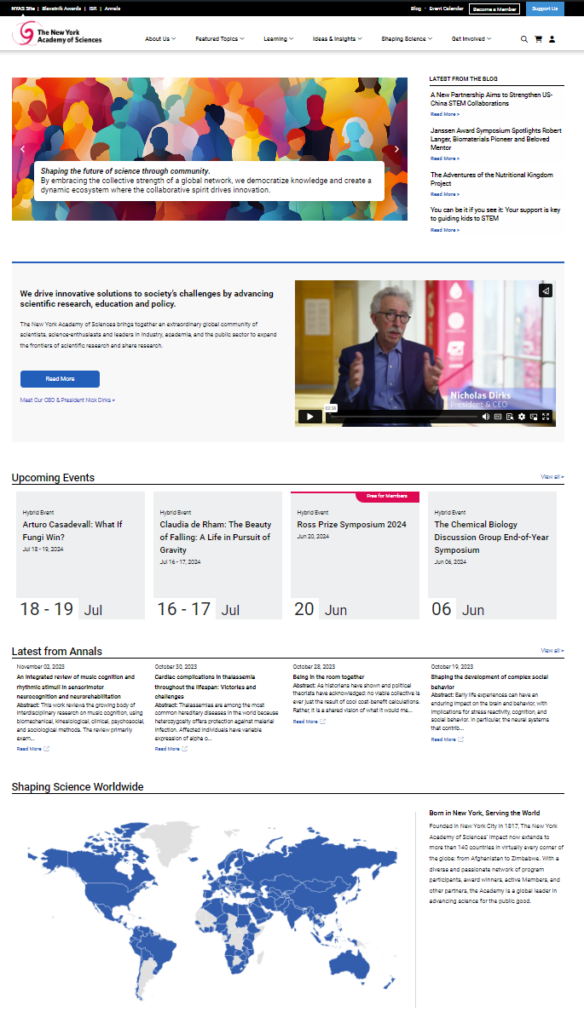A History of the Academy’s Digital Presence
Take a trip down memory lane and look at some of the Academy’s previous website designs.
Published March 20, 2024
By Nick Fetty
Digital Content Manager
1996

The Academy joined the digital age when its first website launched around 1996. At that time, the Academy was based out of its facility on New York’s Upper East Side, as can be seen in the image in the screenshot. The website provided an opportunity to promote longtime Academy publications such as Annals of the New York Academy of Sciences and The Sciences magazine, but it also opened new opportunities to share news and other announcements in real time as well as a new vehicle for recruiting members and engaging aspiring scientists.
2001

Annals continued to have a strong presence when the Academy released the second iteration of its website around 2001. As web technology continued to develop with the turn of the century, the site was able to embrace new capabilities such as providing a live calendar of upcoming events as well as access to press releases and digital photos. News stories from this era are a snapshot in time when issues such as West Nile virus and the “Harbor Project” (an effort to remove contaminants from the Hudson River) were making headlines.
2007

Though still text heavy, the third iteration of the Academy’s website launched around 2007, continued to prominently feature Annals, events, and Academy news. The site served as both a promotional vehicle and an application repository for the Blavatnik Awards for Young Scientists, which was first awarded in 2007. Also around this time, the Academy launched eBriefings, which provided an online recap of academic and scientific research presented during Academy events. Two years earlier, in 2005, the Academy moved its headquarters to 7 World Trade Center, as evidenced by the photos in the upper left and upper right sections of the screenshot.
2012

By the website’s fourth iteration in 2012, the Academy began refining its research focus in more specialized areas, including Life Sciences and Biomedical Research, Physical Sciences and Engineering, Science Education, and Nutrition Science. Some of these remain focus areas of the Academy today. The website showed more emphasis on fundraising, and also prominently placed press releases on the front page as a way to promote major Academy news and announcements.
2017

The fifth iteration of the Academy’s website was less text-heavy and more visual in nature, following the web design trends of the time. The interactive banner at the top of the page provided a prominent place to promote events, press releases, and other timely items. The Academy began putting more emphasis on its blog, which provided a platform to promote Academy happenings not covered by external media as well as a platform for Academy staff, Board members, and others to write thought-provoking pieces about their own areas of expertise. The e-newsletter and social media channels provided further avenues to stay up to date with the Academy.
2024
The Academy’s newest website, officially launched on March 11, 2024, features a clean layout with many visuals and shorter blocks of text. The design enables the embedding of video and other attractive visual elements on the homepage. The Academy continues to promote core programs such as Annals and events, but now also prominently features blog content as well as the Academy’s mission and global impact. The WordPress content management system is user-friendly for staff maintaining the website, and it also allows for greater customization compared to previous platforms. With this new vehicle, the Academy will continue to advance its mission of “science for the public good” by engaging new audiences and providing original multimedia content that showcases the work and accomplishments of the Academy, its members, and partners.
Learn more about the Academy’s history.

